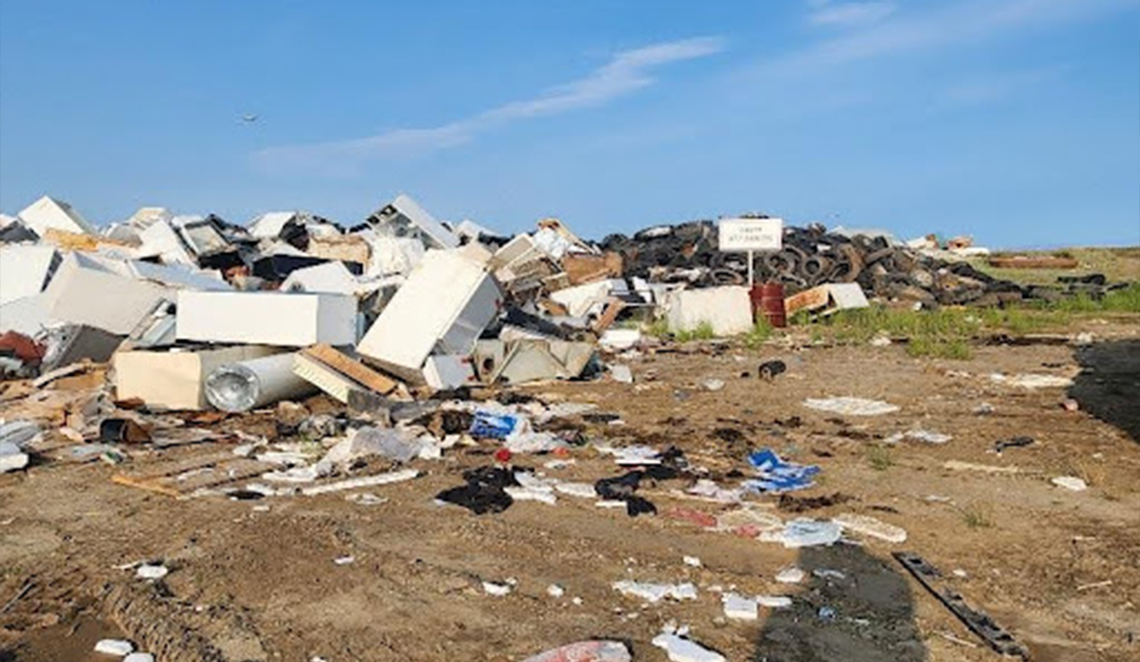| CLIENT | Government of Northwest Territories, Department of Infrastructure |
| LOCATION | Various NWT, including Sachs Harbor, Paulatuk and Uluhuktok |
| PROJECT RELEVANCE | Remote camp locations Managing hazardous and non-hazardous waste Indigenous communities Labour Hours: 1200 |
| SCHEDULE | Start Date: June 2023 End Date: September 2025 |
PROJECT PROFILE
KBL Environmental Ltd. (KBL) was retained by the Government of the Northwest Territories (GNWT) to act as the general contractor, completing and overseeing the management, depollution and removal of hazardous materials from remote sites in the Beaufort Delta, South Slave Lake, North Slave Lake, DehCho, and Sahtu regions of the NWT. This includes waste streams such as fuels, glycols, oils, propane, and other compressed gases, batteries, corrosive material and misc. class 9 waste streams. Access to many of these sites mainly consisted of remote charted flights, required camp set ups, and onsite wildlife monitoring. Waste streams were identified, classified, consolidated and then packaged for marine transportation and barged out to various ports with all-season or winter road access for land transportation.
SCOPE OF WORK
KBL’s scope of work included the inventory and removal of all hazardous and non-hazardous waste streams from community landfills. From batteries to freons, and depolluting all vehicles and machinery that has been sitting in these landfills since the onsite of these communities. Sachs Harbor, Paulatuk, and Uluhuktok specifically were challenging because of the charter in flights, and barge out only situations. Was streams were removed from the site and sound out via barge, other locations are winter road access only, ferry access only or all season roads. This work involved very detailed scheduling and coordination, and budget tracking to be successful. Having up to 3 crews working simultaneously in 3 different communities all with their own unique proved to be challenging, but due to seasonal issues, wild fires, or lack of useable resources in the communities this was often the reality of the project. Some sites involved the setup of remote portable camps, barging and flying in materials and equipment. On completion a final inventory, manifests and reports were provided to the client for each community. This work is ongoing over 5 different contracts for 5 different regions. To date, KBL has removed just shy of 1M KGs of hazardous waste from these community landfills.
PROJECT CHALLENGES
The landfill diversion project presented several challenges that were successfully navigated by KBL Environmental. Key issues included working with remote landfills, containing various hazardous materials such as, mercury, lead, oil, fuels, batteries, freons, and various compressed gases which required meticulous handling procedures. These materials were identified during a site assessment and managed with strict adherence to safety protocols, including specialized decommissioning areas.
The project was further complicated by the remote locations, necessitating careful coordination to minimize disruptions to the communities and ensure public safety. Additionally, the project required innovative waste diversion and reduction techniques, such as recycling non-hazardous materials and moving them into the communities for reuse for community projects. These efforts demonstrated KBL’s ability to adapt to logistical and environmental constraints while maintaining safety, regulatory compliance, and efficiency throughout the project.
PROJECT SUCCESS
Several techniques, including creating a detailed project schedule with key milestones, critical path analysis, and regular progress reporting were used to keep the project on schedule. The team ensured that all members were aware of the project timeline and their specific roles and responsibilities in meeting deadlines. Potential risks were identified, and contingency plans were developed to mitigate any delays. Progress was monitored against the schedule, and adjustments were made as necessary to keep the project on track. Work was completed on schedule with no safety incidents. This was a high-profile project with the Government of the Northwest Territories that required strict adherence to the schedule to algin with client and community expectations.
Additional techniques were employed, including developing a detailed budget with line-item costs for each aspect of the project, tracking expenses throughout the project, and regularly reviewing and adjusting the budget as necessary to maintain the project budget. Potential cost overruns were identified, and strategies were developed to mitigate them, such as seeking out cost-saving measures and negotiating with vendors to secure the best possible pricing. The team ensured that all members were aware of the budget constraints and their role in managing costs effectively. Original scope items were completed under budget.
To ensure that the project was completed to the highest quality standards, several techniques were employed, including developing a quality management plan, conducting regular inspections and audits of work, and ensuring that all team members were properly trained and equipped to perform their tasks to the required standards. Detailed checklists were used to ensure that all tasks were completed to the required specifications, and progress was monitored against the plan to ensure that any issues were identified and addressed in a timely manner. Regular client meetings were conducted to ensure that their expectations were being met, and any concerns or issues were addressed promptly.
COMMUNITY ENGAGEMENT
The Landfill diversion project prioritized community engagement through the use of local contractors and labourers in each community. KBL provided the lead staff who provided the training and development to the local contractors and labourers. By collaborating with local companies and hiring workers from the Local area, the project supported the local economy and created job opportunities. This approach fostered strong relationships with the community, demonstrated a commitment to local capacity building, and ensured that the economic benefits of the project were distributed within the region. The use of local resources also contributed to logistical efficiency, reducing transportation needs and supporting timely project completion. This strategy highlights KBL’s dedication to community involvement and the value of integrating local expertise into complex projects.

